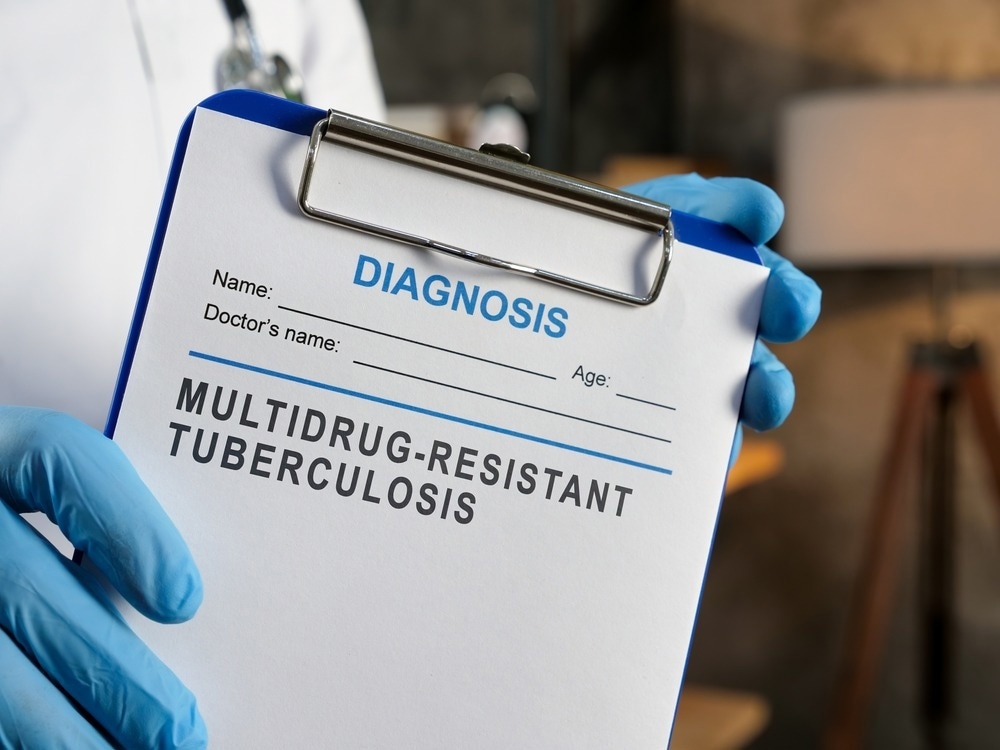In a recent review published in the Open Forum Infectious Diseases journal, researchers reported on the evolution of multidrug-resistant tuberculosis (MDR-TB) therapy.

Study: At long last: short, all-oral regimens for multidrug-resistant tuberculosis in the United States. Image Credit: VitaliiVodolazskyi/Shutterstock.com
Background
MDR-TB is associated with Mycobacterium tuberculosis resistance to rifampin and isoniazid and has required a long treatment duration, associated with more side effects and unfavorable outcomes than drug-susceptible TB (DS-TB).
Studies have reported successful treatment of MDR-TB using shorter orally administered regimens lasting six to nine months. However, best practice recommendations to implement the regimens in the United States (US) are lacking.
About the review
In the present review, researchers reviewed existing data on short-duration all-oral MDR-TB therapy.
All-oral MDR-TB therapeutic regimens and framework for implanting short all-oral regimens
Shorter all-oral regimes include bedaquiline 200.0 mg regularly for eight weeks, followed by 100.0 mg regularly for nine weeks, with moxifloxacin 400.0 mg, pretomanid 200.0 mg, or pyrazinamide 1500.0 mg for 17 weeks. The total duration of treatment was four months.
A study conducted in South Korea included delamanid 100.0 mg twice daily, levofloxacin 750.0 to 1000.0 mg regularly, pyrazinamide 1000.0 to 2000.0 mg, linezolid 600.0 mg regularly for two months and 300.0 mg afterward till treatment end.
In China, for the initial four to eight weeks, MDR-TB patients received daily levofloxacin 500.0 to 1000.0 mg, linezolid 600.0 mg, cycloserine 500.0 to 750.0 mg, pyrazinamide 1500.0 mg, and clofazimine 100.0 mg.
The pyrazinamide-susceptible participants received pyrazinamide with levofloxacin or linezolid with cycloserine over 24 to 32 weeks, and pyrazinamide-resistant ones received cycloserine, linezolid, clofazimine, and levofloxacin over 36 to 44 weeks. In trials conducted in South Africa, weight-based doses for bedaquiline, linezolid, clofazimine, levofloxacin, and delamanid over 24 weeks were provided.
In Vietnam- and Philippines-based trials, bedaquiline 200.0 mg was provided daily for eight weeks, followed by 100.0 mg daily, and daily regimes including delamanid 300.0 mg, levofloxacin 1000.0 mg, linezolid 1200.0 mg, clofazimine 100.0 mg, over 16 weeks, 24 weeks, or 32 weeks.
Studies evaluating shorter regimens for MDR TB include the SimpliciTB, MDR END, TB TRUST, BEAT-tuberculosis, and DRAMATIC trials.
Suggested workups for MDR-TB patients, managed with shorter all-oral treatments over six months, include sputum acid-fast bacilli (AFB)/culture, whole-genome sequencing (WGS), phenotypic drug susceptibility testing (DST), chest radiography, weight assessments, peripheral and optic neuropathy, complete blood count (CBC), comprehensive metabolic profiling, thyroid function tests, and electrocardiography (EKG).
DST may involve WGS, broth microdilution, or testing for bedaquiline, linezolid, and pretomanid. In addition, DST to a fourth agent, such as clofazimine, could be performed.
The empirical MDR-TB regimen includes bedaquiline 400 mg daily for two weeks, 200 mg thrice weekly, pretomanid 200 mg daily, linezolid 600 mg daily, and moxifloxacin 400 mg daily.
Safety monitoring includes EKG, CBC, and hepatic enzyme testing, performed at baseline and during therapy. Monthly peripheral neuropathy assessments must be performed.
The standard treatment duration for all-oral therapy for MDR-TB of six months can be prolonged to nine months if bedaquiline or linezolid MIC≥ 1.0 µg/ml, sputum smear ≥three, and/or culture growth following >eight weeks of therapy.
Evolution of MDR-TB treatment
MDR-TB has required longer treatment regimens, associated with higher unfavorable outcomes and side effects rates than drug-susceptible tuberculosis (DS-TB).
Rifampin and isoniazid are the mainstays of therapy, and including pyrazinamide in the initial two months enables reducing the duration of treatment to six months.
Rifampin and isoniazid monoresistance can be effectively treated with first-line therapeutic agents; however, drug resistance requires longer durations of second-line drugs, which is linked to poorer outcomes and greater drug toxicity. Resistance to first-line agents was often accompanied by resistance to rifampin and isoniazid.
Thus, injectable agents and fluoroquinolones, including amikacin, kanamycin, and capreomycin, were essential components of the MDR-TB treatment regimen. DS-TB treatment regimens included isoniazid, para-aminosalicylic acid (PAS), and streptomycin over 18 months.
Initially, MDR-TB therapy comprised six to seven drugs and required longer hospitalization duration and surgical resection. In 2011, the World Health Organization (WHO) recommended late-generation fluoroquinolones, injectable aminoglycosides, PAS, prothionamide or ethionamide, and cycloserine for an eight-month intensive therapy and a 20-month total therapy.
In 2016, the WHO endorsed shorter regimens, with an 88% no-recurrence treatment rate for MDR-TB treated with pyrazinamide, clofazimine, ethambutol, and gatifloxacin over nine months to one year, with intensive therapy for three to four months.
The regimens included high-dosage isoniazid, kanamycin, and prothionamide. Resistance to pyrazinamide and fluoroquinolones increased the risk of unfavorable outcomes of the short-course MDR-TB therapy.
By 2019, injectable agents were out of favor due to their toxicity, and 75% to 89% success rates were documented for all-oral bedaquiline therapy. The 2019 guidelines recommended all-oral treatment with a short injectable for 18 to 20 months.
With the short-course all-oral therapy, most culture conversions occurred in the initial two months of therapy. Longer linezolid exposures were associated with better treatment outcomes.
The WHO endorsed the conditional use of the six-month BPaLM and BPal regimens for MDR and pre-extremely drug-resistant (XDR-TB) with moxifloxacin or levofloxacin resistance, for individuals with pulmonary and extrapulmonary TB, excluding disseminated, bone, and meningeal disseminated TB.
Conclusion
Based on the review findings, the novel, short-duration, all-oral treatment regimens for MDR-TB can optimize treatment outcomes, maximizing effectiveness and minimizing toxicity.
The implementation framework includes DST, choice of empirical drugs, safety assessments, and the choice of duration of treatment. DST must be particularly performed for bedaquiline, the backbone of short-duration all-oral MD-TB regimens, and BPaLM should be preferred over BPaL regimens.